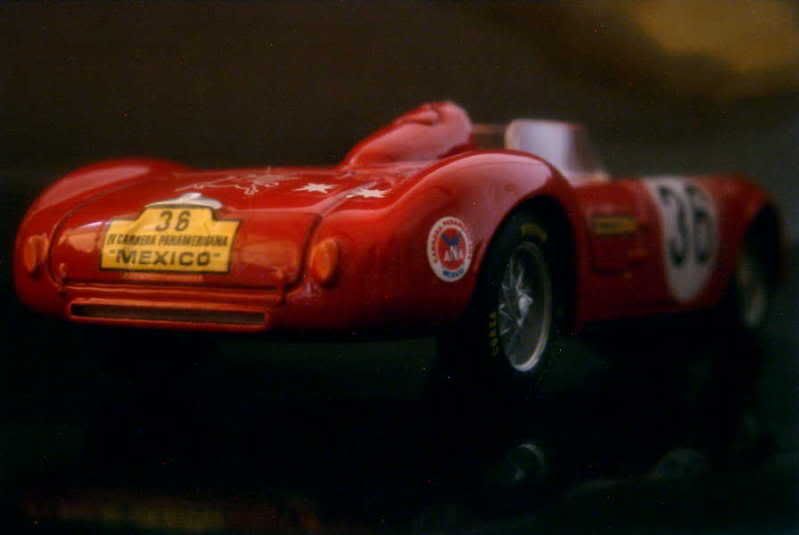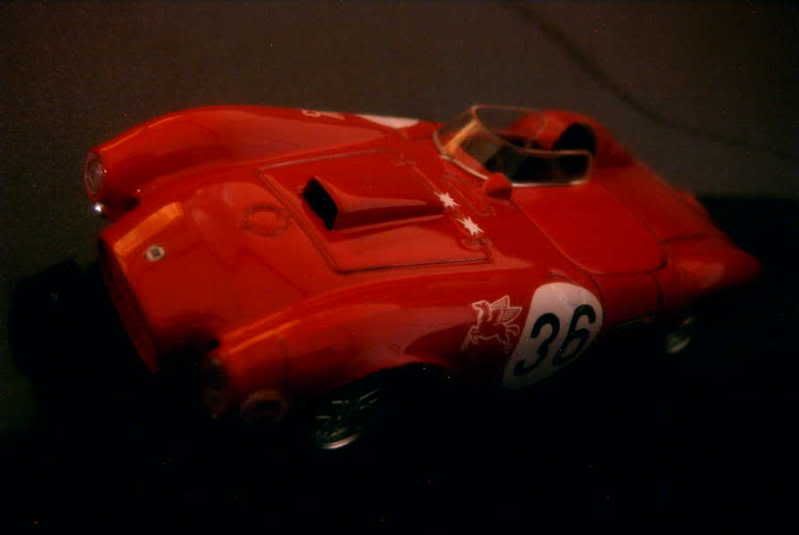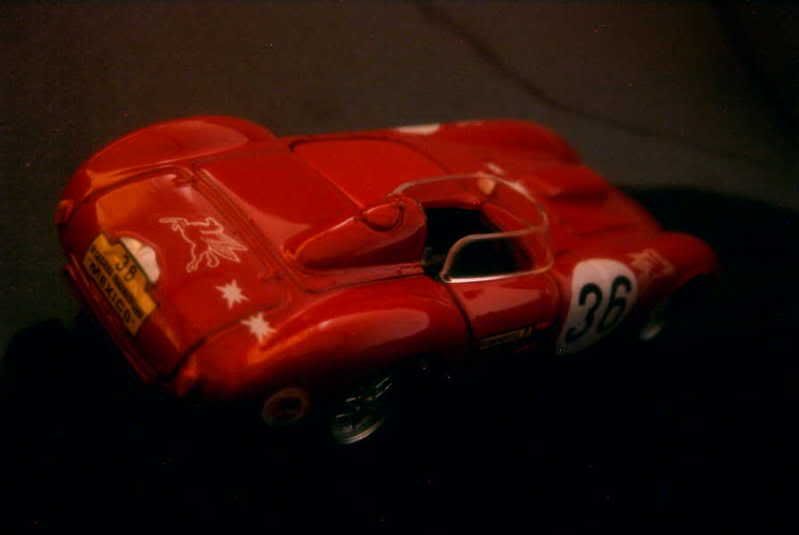A little history
Under the management of its founder Vincenzo Lancia, building quality and technical innovation were the keywords at the Lancia company – this allowed few space for such trivialities as motor sports… despite the fact that Vincenzo was a former racing pilot himself. All of this gradually changed after his death in 1937. His wife Adele took over for their young son Gianni. In 1945, now aged 21, Gianni Lancia formally assumed the direction of the firm with the assistance of Vittorio Jano, his technical director. Young Italians’ dreams were then filled with motor racing glory. Gianni Lancia was not different from other young men of his age, and Jano, made famous by his involvement with Alfa Romeo between the wars, would not be the one to discourage him.
During the early Fifties, Lancia launched an ambitious assault on motor racing. The company became involved in sportscars and Formula One races, with two different Jano-designed machines: the D24 and the D50, respectively.
A D20 model actually preceded the D24, appearing at the Mille Miglia early in 1953. A totally new design, the D24 soon followed its footsteps, being first entered at the Nürburgring 1000 kms in August of the same year. The D24 was indeed fast, but many a time and oft had to retire for mechanical failures. A resounding success finally came in the most trying event of them all: Lancia placed its D24s at the two highest spots in the 1953 Carrera Panamericana’s rankings.
Expectations were high in 1954. At first Lancia could rejoice: for the first time in its history, the company won the Mille Miglia. Then during the rest of the season, the D24 proved again undoubtedly brilliant but too fragile a machine. Jano developed a D25 but, as it turned out, it was only raced once before the expensive sportscar program was cancelled. Though far from dominating with a car that still needed much more development in order to reach its full potential, Gianni Lancia decided to pursue still higher goals, and launched its company in Formula One.
Though Lancia's bankers were alarmed, Vittorio Jano could rejoice at the prospect of his return onto the Grand Prix stage. For this he designed a new car, the D50. This advanced single-seater featured side-mounted fuel tanks, allowing for better handling than most of its rivals, which still had their tanks fitted in the rear tail, totally upsetting the weight distribution as races progressed and their tanks were emptying. The D50 appeared late in 1954. For its first race, the Spanish Grand Prix at Barcelona, its driver Alberto Ascari took the pole position in practice, drove the fastest lap during the race and retired while in the lead – a promising debut!
Now concentrating exclusively on Formula One, Lancia started its first full season in the most prestigious competition of all in 1955. More money was pumped into the company’s racing program which, in view of the results recorded thus far, was extremely expensive. Then, tragedy struck during the Monaco Grand Prix: Ascari, missing the chicane, plunged into the port’s waters. Rescuers came to the help of the unfortunate pilot, who could be brought to the surface after spending some long, anxious moments stuck in his sinking car. A rest would have done no harm after such a stunt, but Ascari didn’t want anything like this, and headed for Monza. With Lancia out of sportscars racing, he had received permission to race for Ferrari in non-Formula One events and, only four days after his dreadful accident, decided to test a 750 model for Lancia’s archrival. No one will ever know for sure what happened: Ascari left the track at high speed, was thrown out of the car and died moments later – some speculate that he kept sequels from his previous accident and fainted while entering the curve.
Without its star driver and in an increasingly dramatic financial position, Gianni’s dream was rapidly turning into a nightmare. In June 1955, he and his mother sold their shares of the company to businessman Carlo Pesenti. Coffers were empty, making the pursuit of a motor racing campaign out of the question. The whole Formula One outfit was ceded to Enzo Ferrari and his team who, with money, time and expertise, turned the D50 into a championship-winning thoroughbred.
About the model
Model: Lancia D24 Spyder
Year: 1953
Event: 1953 Carrera Panamericana, driven by Juan Manuel Fangio (finished 1st)
Maker: Brumm
Scale: 1/43
Distributed by: Brumm
Acquired: brand new, in March 2008, in Montpellier, France
Brumm soldiered on much longer than most of its rivals, stubbornly producing its models in Italy rather than the unavoidable China, and maintaining a wide range of original models sold at a fair price. This die-cast is quite representative: though quality, both in terms of design refinement and even more workmanship, is not extremely high, it received a splendid paint job and nice decals, and is very acceptable overall – well enough to award it a 13/20.





Under the management of its founder Vincenzo Lancia, building quality and technical innovation were the keywords at the Lancia company – this allowed few space for such trivialities as motor sports… despite the fact that Vincenzo was a former racing pilot himself. All of this gradually changed after his death in 1937. His wife Adele took over for their young son Gianni. In 1945, now aged 21, Gianni Lancia formally assumed the direction of the firm with the assistance of Vittorio Jano, his technical director. Young Italians’ dreams were then filled with motor racing glory. Gianni Lancia was not different from other young men of his age, and Jano, made famous by his involvement with Alfa Romeo between the wars, would not be the one to discourage him.
During the early Fifties, Lancia launched an ambitious assault on motor racing. The company became involved in sportscars and Formula One races, with two different Jano-designed machines: the D24 and the D50, respectively.
A D20 model actually preceded the D24, appearing at the Mille Miglia early in 1953. A totally new design, the D24 soon followed its footsteps, being first entered at the Nürburgring 1000 kms in August of the same year. The D24 was indeed fast, but many a time and oft had to retire for mechanical failures. A resounding success finally came in the most trying event of them all: Lancia placed its D24s at the two highest spots in the 1953 Carrera Panamericana’s rankings.
Expectations were high in 1954. At first Lancia could rejoice: for the first time in its history, the company won the Mille Miglia. Then during the rest of the season, the D24 proved again undoubtedly brilliant but too fragile a machine. Jano developed a D25 but, as it turned out, it was only raced once before the expensive sportscar program was cancelled. Though far from dominating with a car that still needed much more development in order to reach its full potential, Gianni Lancia decided to pursue still higher goals, and launched its company in Formula One.
Though Lancia's bankers were alarmed, Vittorio Jano could rejoice at the prospect of his return onto the Grand Prix stage. For this he designed a new car, the D50. This advanced single-seater featured side-mounted fuel tanks, allowing for better handling than most of its rivals, which still had their tanks fitted in the rear tail, totally upsetting the weight distribution as races progressed and their tanks were emptying. The D50 appeared late in 1954. For its first race, the Spanish Grand Prix at Barcelona, its driver Alberto Ascari took the pole position in practice, drove the fastest lap during the race and retired while in the lead – a promising debut!
Now concentrating exclusively on Formula One, Lancia started its first full season in the most prestigious competition of all in 1955. More money was pumped into the company’s racing program which, in view of the results recorded thus far, was extremely expensive. Then, tragedy struck during the Monaco Grand Prix: Ascari, missing the chicane, plunged into the port’s waters. Rescuers came to the help of the unfortunate pilot, who could be brought to the surface after spending some long, anxious moments stuck in his sinking car. A rest would have done no harm after such a stunt, but Ascari didn’t want anything like this, and headed for Monza. With Lancia out of sportscars racing, he had received permission to race for Ferrari in non-Formula One events and, only four days after his dreadful accident, decided to test a 750 model for Lancia’s archrival. No one will ever know for sure what happened: Ascari left the track at high speed, was thrown out of the car and died moments later – some speculate that he kept sequels from his previous accident and fainted while entering the curve.
Without its star driver and in an increasingly dramatic financial position, Gianni’s dream was rapidly turning into a nightmare. In June 1955, he and his mother sold their shares of the company to businessman Carlo Pesenti. Coffers were empty, making the pursuit of a motor racing campaign out of the question. The whole Formula One outfit was ceded to Enzo Ferrari and his team who, with money, time and expertise, turned the D50 into a championship-winning thoroughbred.
About the model
Model: Lancia D24 Spyder
Year: 1953
Event: 1953 Carrera Panamericana, driven by Juan Manuel Fangio (finished 1st)
Maker: Brumm
Scale: 1/43
Distributed by: Brumm
Acquired: brand new, in March 2008, in Montpellier, France
Brumm soldiered on much longer than most of its rivals, stubbornly producing its models in Italy rather than the unavoidable China, and maintaining a wide range of original models sold at a fair price. This die-cast is quite representative: though quality, both in terms of design refinement and even more workmanship, is not extremely high, it received a splendid paint job and nice decals, and is very acceptable overall – well enough to award it a 13/20.








2 comments:
Hi Laurent, how are you, the first site i got into, was forum auto, the one i told you that was in French, anyway i click your site there, under your name lorenzo712, Regards. Resti
Hello Resti, I just noticed that thanks to you, this blog has now twice the number of followers it had up to now! There are two of you at present, so thanks a lot to both of you! ;)
Post a Comment